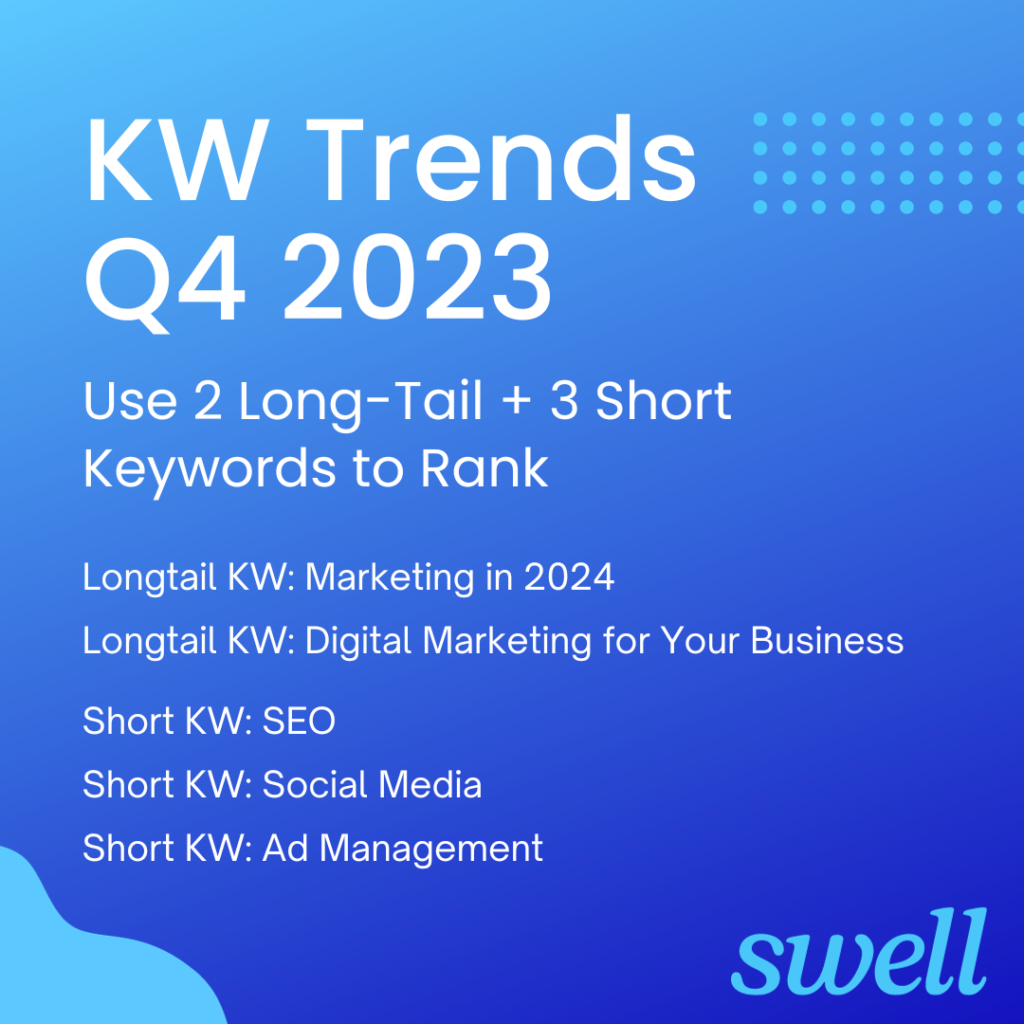With the whole SEO community and businesses scrambling to come back from the devastating blows of the latest Helpful Content Update from Google, we want all of you to remember not to panic. This isn’t the first update from Google, nor will it be the last update that will send the internet into a whirlwind. It may take months for niche websites to come back from this update, but in many ways, we had to know the wild-west days of AI and sloppy writing would come to their end.
But Why Did Google Roll Out This Update?
Just as the days of keyword stuffing and link farms have ended, so must the endless Chat GPT-written articles. Don’t get me wrong; most in the industry use AI for mundane tasks like writing blogs, social media captions, and webpage content. The difference is that you have to be the expediter in the process. You can’t just take something a large language model has written and slap it out on your website. You need to read it, not only in your head but read it out loud. You need to make sure it’s correct!
Now that you’ve read your content, here’s what you need to ask yourself. Does it even make sense? Does it help the person searching for these keywords? Is the grammar remotely correct, or did the AI give you a comma at every turn?
At its core, Google’s latest update is attempting to solve this problem. Just as SEOs look to see our bounce rate and engagement data, Google must also determine the usefulness of its SERPs based on the same user experience. Did the searcher pogo stick straight from one page to another in its top 10 results? Did it happen more than once? This is an alarming problem for Google and a larger picture of how we can all make it through this update.

Why in Q4?
Many websites affected by this update were informational sites that weren’t helpful for the user. As an example, product reviews. As we move into quarter 4, we know as SEOs, this means the holiday season. This is the season for sales, discounts, and e-commerce websites to duke it out. It is a highly competitive season, and Google knows this. If not now, then when? Google knew it needed to address this problem to compete with social media platforms. It’s becoming an increasingly apparent part of our daily lives that young people don’t search for things on Google or Bing; they go to TikTok. The number is above 40% of Gen Z going to forums like Reddit or TikTok before they go to Google, so something has to shift.
Google’s Guidance on Crafting Content
Now, we will cover what many of you may have already seen, but remember, this is the core of this update. Was it a harsh slap in the face for most of us? Yes. But we should ask ourselves how we come back from this stronger. When Google gives us the answers, we should pay attention and keep our fingers crossed that they lighten the severity a bit in the coming weeks.
Human-Centric Focus
- Do you have an existing or intended audience for your business or site that would find the content useful if they came directly to you?
- Does your content clearly demonstrate first-hand expertise and a depth of knowledge (for example, expertise that comes from having actually used a product or service, or visiting a place)?
- Does your site have a primary purpose or focus?
- After reading your content, will someone leave feeling they’ve learned enough about a topic to help achieve their goal?
- Will someone reading your content leave feeling like they’ve had a satisfying experience?
- Are you keeping in mind our guidance for core updates and for product reviews?
Don’t Feed the Machines
- Is the content primarily to attract people from search engines rather than made for humans?
- Are you producing lots of content on different topics in hopes that some of it might perform well in search results?
- Are you using extensive automation to produce content on many topics?
- Are you mainly summarizing what others have to say without adding much value?
- Are you writing about things simply because they seem trending and not because you’d write about them otherwise for your existing audience?
- Does your content leave readers feeling like they need to search again to get better information from other sources?
- Are you writing to a particular word count because you’ve heard or read that Google has a preferred word count? (No, we don’t).
- Did you decide to enter some niche topic area without any real expertise but instead mainly because you thought you’d get search traffic?
- Does your content promise to answer a question that actually has no answer, such as suggesting there’s a release date for a product, movie, or TV show when one isn’t confirmed?
It always seems like a no-brainer when they remind us to make things useful for the user experience. Still, we sometimes lose sight when attempting to get ahead of the competition by tricking the platform that exists to serve said user.

How To Heal and Compete in This Atmosphere
Now that you know what’s going on and why, let’s drop the conspiracies and find the best ways to get ahead of this issue.
Written For People, Reviewed By People, Useful For People
Google wants you to do things organically. They want you to get good reviews at an average pace from real humans. They want you to write valuable content for searchers and host the best content for these users. They want you to acquire links at a natural pace from reasonable sources. You can’t trick the algorithm. It’s designed to spot trickery, so don’t fight it. Grow your audience and customer base naturally, and you’ll be rewarded greatly.
What Kind of Content Should I Write?
When we craft content, we need to focus on keywords that attract our customers and why those keywords attract them. What’s the search intent? Is it informational or transactional? Can you create enough content to fulfill the users’ search query but keep them on the page longer with additional helpful information?
That’s the goal of content creators. When we craft something, we want the user to say wow, I got more than I was even searching for. This creates natural engagement and click-thru rates without spamming them with unnecessary content.
How Do I Poise an Advantage Against My Competition?
You need to stay abreast of trends. Your competitors may be using several tactics at once to stay ahead. Still, as I’ve stated previously, your best advantage is compelling content that is correct with proper grammar/punctuation. There’s no magic wand for SEO, but here’s a trend I’ve noticed that can help you with your keyword-focused content to rank better naturally. We even made a shareable graphic in case you want to post something on social.

KW Trends Q4 2023
Use 2 Long-Tail + 3 Short Keywords to Rank
Example:
Longtail KW: Marketing in 2024
Longtail KW: Digital Marketing for Your Business
Short KW: SEO
Short KW: Social Media
Short KW: Ad Management
Example paragraph with keyword plan:
Digital marketing for your businesses is crucial to stay ahead of your competition. Whether you’re looking to spruce up your SEO efforts, social media presence, or digital ad management, you need a plan for Marketing in 2024. We’ll go over the best practices for the new year and how you can use digital marketing for your business to succeed in Q1.
It’s just that simple. If you want to write content that people are interested in, hit keywords and longtail keywords in a natural way that you would like to read. Don’t forget that Google is not your enemy but a platform trying to compete to be the best search platform, and that’s where you want to be.
Are You Struggling With This Update?
If you’re struggling with SEO tactics and are sick of trying to trick the algorithms, try Swell Services. We are experts ready to help you succeed. We can help you get ahead of your competition and grow your business. Contact us today.






